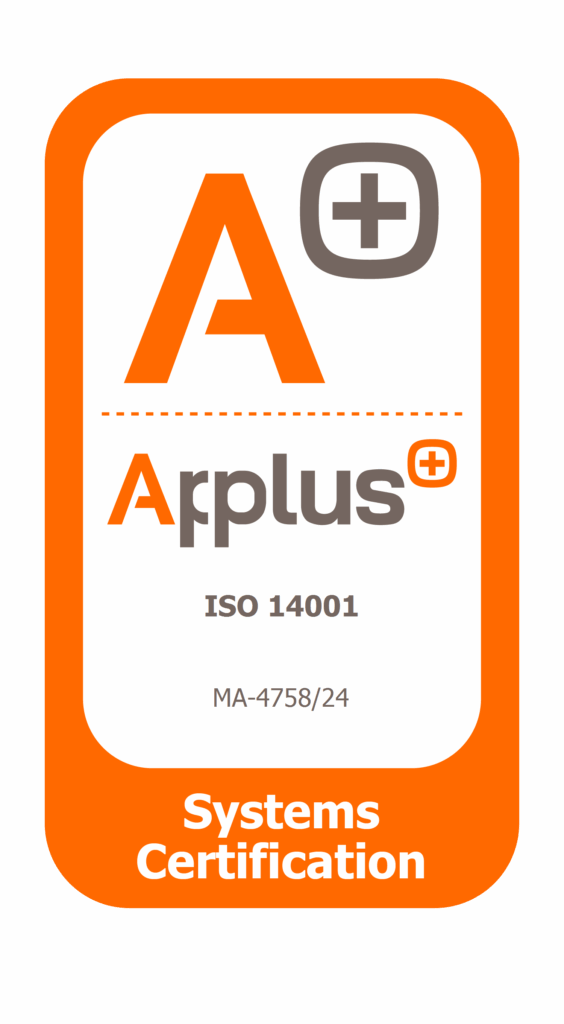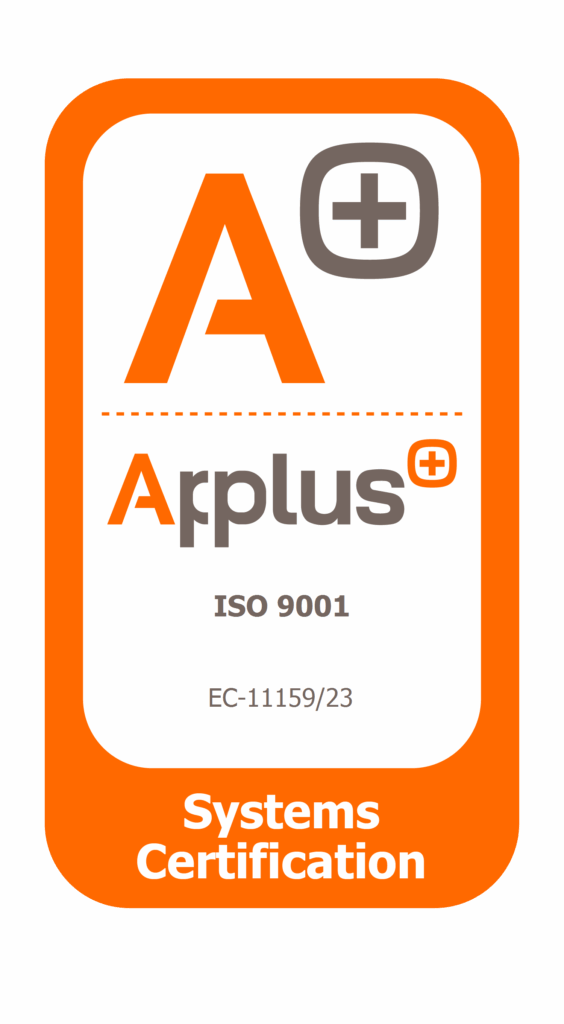Certifications
We are committed to offering only the highest quality magnets, backed by internationally recognized certifications. Every product we offer meets rigorous safety and effectiveness standards, ensuring you receive reliable and effective magnets for all of your needs. ISO certifications and other relevant industry standards ensure that our magnets not only meet, but exceed performance expectations, providing a durable and safe solution for industrial, educational, and creative applications. Trust us for your magnet needs, knowing that every piece is certified to deliver excellence and reliability.
ISO 9001 - 2015
The ISO 9001:2015 standard is an international framework that sets the requirements for an effective quality management system (QMS) within an organization. Here is an overview of the key aspects of this standard:
1. Customer Focus: The standard emphasizes the importance of understanding and meeting customer needs and expectations.
2. Leadership: Organizational leaders must demonstrate their commitment to the QMS by establishing a quality policy and ensuring that quality objectives are set and maintained.
3. Process Approach: Organizations are expected to identify, understand, and effectively manage the interrelated processes that contribute to achieving quality objectives.
4. Systematic Management Approach: The standard encourages a system-based approach to management, considering the interrelationship of all processes within an organization.
5. Continuous Improvement: The standard promotes continuous improvement of the organization’s overall performance through the use of the quality policy, quality objectives, data analysis, and corrective and preventive actions.
6. Evidence-Based Decision Making: Decisions should be based on the analysis and evaluation of relevant data and information.
7. Mutually Beneficial Supplier Relationships: Organizations are expected to establish mutually beneficial relationships with suppliers to improve supply capability and the quality of products and services.
The ISO 9001:2015 standard focuses on helping organizations establish a solid framework for consistently managing the quality of their products or services, enhancing customer satisfaction, and optimizing their internal processes.
ISO 14001 - 2015

The ISO 14001:2015 standard is an international framework that defines the requirements for an effective environmental management system (EMS) within an organization. Here are the key aspects of this standard:
1. Context of the Organization: The organization must understand its operational context and the needs and expectations of relevant stakeholders concerning the environmental management system.
2. Leadership: Organizational leaders must demonstrate their commitment to environmental protection by establishing the environmental policy, defining roles, responsibilities, and authorities within the EMS.
3. Planning: The organization needs to set environmental objectives, identify environmental aspects, and assess the risks and opportunities associated with its activities, products, and services.
4. Support: Necessary resources should be provided to implement, maintain, and improve the EMS, as well as ensuring the competence of personnel operating within the system.
5. Operation: The organization must plan and control its processes to ensure compliance with legal and other applicable requirements, as well as achieving its environmental objectives.
6. Performance Evaluation: Processes should be established and maintained to monitor, measure, analyze, and evaluate the environmental performance of the organization and its progress toward objectives and targets.
7. Improvement: The organization must continuously seek to enhance its environmental performance through the correction of nonconformities, continuous improvement efforts, and consideration of opportunities for environmental enhancement.
The ISO 14001:2015 standard provides a solid framework for organizations to manage their environmental impacts systematically and effectively. By implementing this standard, organizations can reduce their environmental footprint, comply with applicable legislation, improve operational efficiency, and enhance their environmental image and reputation.
Reach

The REACH regulation (Registration, Evaluation, Authorisation, and Restriction of Chemicals) is a European Union (EU) law aimed at protecting human health and the environment by controlling the chemical substances used in industrial products and processes. Here are the key aspects of this regulation:
1. Registration: Manufacturers and importers of chemical substances must register them with the European Chemicals Agency (ECHA) if they produce or import them in quantities of one ton or more per year. The registration requires detailed information about the properties, uses, and recommended safety measures for these substances.
2. Evaluation: Competent authorities in EU Member States assess the information provided in the registrations to ensure compliance with safety and protection standards for human health and the environment. Evaluations are conducted for both new and existing substances on the market.
3. Authorisation: Certain Substances of Very High Concern (SVHC), such as those that are carcinogenic, mutagenic, or toxic to reproduction, may require special authorisation for use. Companies must apply for and obtain authorisation to continue using these substances unless safer alternatives are available or substitution is not feasible.
4. Restriction: The EU can restrict or ban the use of specific chemical substances if it is deemed necessary to protect human health or the environment. These restrictions are based on risk assessments and scientific evaluations.
5. Obligations for Intermediary and Downstream Users: Intermediary users (mixture and product manufacturers) and downstream users (such as retailers) must ensure that their use of chemical substances is covered by the registrations and complies with applicable restrictions and authorisations.
6. Supply Chain Communication: All parties in the supply chain must exchange relevant information about the chemical substances used in their products to ensure safe and legal usage.
The REACH regulation is essential for ensuring that chemical substances used in the EU are managed responsibly, minimizing risks to human health and the environment. Additionally, it encourages innovation towards safer and more sustainable alternatives in the chemical industry. Would you like more detailed information on any specific aspect of REACH?
Rohs

The RoHS directive (Restriction of Hazardous Substances in Electrical and Electronic Equipment) is a European Union (EU) regulation aimed at limiting the use of certain hazardous substances in electrical and electronic equipment to protect human health and the environment. Here are the key points of this regulation:
1. Restricted Substances: RoHS limits the use of six hazardous substances in electrical and electronic equipment. These substances include lead, mercury, cadmium, hexavalent chromium, polybrominated biphenyls (PBB), and polybrominated diphenyl ethers (PBDE).
2. Scope of Application: The RoHS directive applies to a wide range of electrical and electronic equipment, including household appliances, IT devices, telecommunications equipment, electronic toys, electrical tools, and more.
3. Limited Exemptions: RoHS provides certain exemptions for specific uses of restricted substances when no technically viable alternatives exist. However, these exemptions are strictly regulated and periodically reviewed.
4. Manufacturer Responsibility: Manufacturers, importers, and distributors of electrical and electronic equipment are responsible for ensuring their products comply with RoHS requirements before being placed on the EU market.
5. Compliance and CE Marking: Products that comply with RoHS must carry the CE marking, indicating that they meet the EU’s safety and health requirements.
6. Environmental Impact and Benefits: RoHS helps reduce the amount of hazardous substances in electronic waste, minimizing the negative environmental impact during the manufacturing, use, and disposal stages of these products.
In summary, the RoHS directive seeks to protect human health and the environment by restricting the use of hazardous substances in electrical and electronic equipment, thereby promoting the production and use of safer and more sustainable products.
Conflict minerals

Conflict minerals regulations refer to rules designed to address the issue of minerals sourced from areas impacted by armed conflicts and human rights violations. Here is a detailed overview:
1. Conflict Minerals: These regulations focus on four specific minerals: tin, tantalum, tungsten, and gold, often referred to as “conflict minerals.” These minerals are extracted in regions affected by armed conflict, such as the Democratic Republic of the Congo (DRC) and neighboring countries in Central Africa.
2. The Problem: The extraction and trade of these minerals often finance armed groups and contribute to severe human rights abuses, including child labor, inhumane working conditions, and environmental degradation.
3. Key Legislation: The main legislation concerning conflict minerals is the U.S. Dodd-Frank Act, Section 1502. This law requires companies to report the origin of these minerals in their products and disclose any connections to armed conflicts or human rights violations.
4. Disclosure Requirements: Companies must conduct due diligence to determine the source of minerals in their supply chain and publicly disclose this information in annual reports or other public statements.
5. Global Impact: Although the Dodd-Frank Act is a U.S. law, its impact is global due to the interconnected nature of global supply chains. Many companies worldwide must comply with these requirements if they operate in U.S. markets or have suppliers that do.
6. Objective: The primary goal of these regulations is to promote ethical and responsible business practices, thereby reducing the inadvertent funding of armed conflicts and encouraging respect for human rights in conflict-affected areas.
In summary, conflict minerals regulations aim to address ethical and humanitarian concerns related to the extraction and trade of minerals from conflict zones, promoting transparency in supply chains and encouraging responsible business practices on a global scale.
Contestamos en 24/48h
Contáctanos
Si necesitas información o asesoramiento para cualquier tipo de aplicación plástica, rellena el siguiente formulario. Nos pondremos en contacto con usted en un plazo inferior a 48h.
